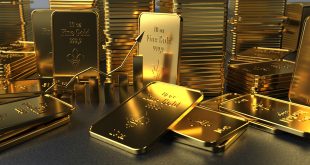China’s manufacturing sector has experienced its fourth consecutive month of contraction in January, according to an official survey released on Wednesday. The data suggests ongoing challenges for the large sector and the broader economy in regaining momentum at the outset of 2024. The official purchasing managers’ index (PMI) for the manufacturing sector, while showing a slight increase to 49.2 points from December’s 49.0, remains below the critical 50-point threshold that separates growth from contraction.
Key Manufacturing Data:
The PMI data for January provides the initial official glimpse into how the world’s second-largest economy is faring in the new year, following a post-COVID-19 recovery that fell below expectations. The Lunar New Year’s impact, which falls on February 10 this year, might also be influencing the survey, as factories may close early and send workers home before the holiday.
Despite a rise in output, the sub-index for new orders declined for the fourth consecutive month, reaching 49 points. Weak external demand also played a role, with the new export orders index dropping for the tenth consecutive month to 47.2. The data reflects persistent deflationary pressures and an overall weak economic momentum.
Policy Measures:
In response to economic challenges, Chinese Central Bank Governor Pan Gongsheng announced a reduction in the required reserve ratio for banks last week, aiming to stimulate growth. The authorities face a complex task as they navigate challenges such as declining real estate, local government debt risks, deflationary pressures, and weak global demand.
Non-Manufacturing and Composite PMI:
On a more positive note, the official PMI for non-manufacturing sectors, including services and construction, rose to 50.7 points from 50.4 in December, marking the highest level since September the previous year. The composite PMI, encompassing both manufacturing and services, reached a four-month high of 50.9 in January, up from 50.3 the previous month.
IMF Growth Forecast and Beijing’s Expectations:
On Tuesday, the International Monetary Fund raised China’s growth forecast for 2024 to 4.6 percent, up from 4.2 in October. This adjustment is attributed to significant financial support from the authorities and a less severe than expected slowdown in the real estate sector. While China’s official 2024 growth target is yet to be announced, policymakers are expected to maintain a similar target to the previous year, around five percent.
Conclusion:
China’s manufacturing challenges underscore the complexities faced by the economy as it navigates through various headwinds. The interplay of global factors, internal policies, and external demands will play a crucial role in shaping China’s economic trajectory in the coming months. Policymakers will need to carefully balance stimulus measures with addressing underlying structural issues to ensure sustainable and robust growth.
 Noor Trends News, Technical Analysis, Educational Tools and Recommendations
Noor Trends News, Technical Analysis, Educational Tools and Recommendations





